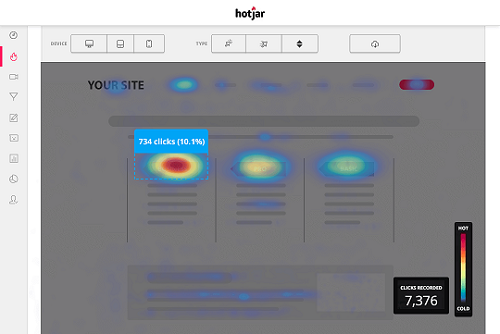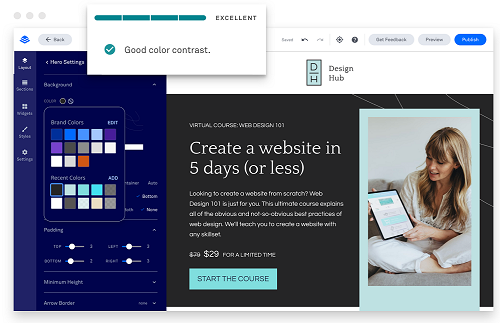The Only Way To Get Traction For Your PR Campaign
When kicking off a fresh PR campaign, marketers want to know if it’s going to gain and sustain momentum, especially if their aim is to break into new target markets and regions. They are all probably thinking the same thing – how do we quickly generate momentum where our brand presence is non-existent. Here Simon Woolley, Engagement Specialist, at IBA International, takes a deep dive into Signal Theory, analyzing how using a pattern of content communication can have a drastic impact on campaign momentum, heavily influencing not only journalists, but key stakeholders, and potential customers and prospects.
Picture this – a key publication has published a piece that carries your message but with their headline, they’ve recognised the importance of your message and run with it. This attracts excellent coverage and momentum is rolling, all while your brand sits alongside your competitors and other influences in the industry. The signal that your company is a brand leader is unmistakable. This positioning is the result of a PR campaign being successful and continuing to gather momentum.
If you’re trying to get to this point when cracking new geographies and industries, then exploiting Signal Theory is what will set your next PR campaign head and shoulders above the competition.
Understanding the theory and how to use it to its optimum, is crucial when trying to gain and sustain PR momentum.
As momentum grows, the results follow naturally, a fact highlighted in a study via LinkedIn that found 78% of buyers at B2B organisations look to three or more pieces before making an informed decision on purchasing. Just shows that you need to be in the right place, and in good company.
Success isn’t overnight – have patience and the results will follow
A successful campaign rarely happens overnight, it takes patience and time to nurture the campaign to get where it needs to be. However, when the suitable journalist targets have been chosen, this will set the foundation to make sure your messages are being communicated to the right publications and, critically, the right end readers – your sales prospects. Take the time, in the beginning, to map out a well-rounded content strategy to target these publications, the pay-off later will all be worth it.
There’s a lot to learn with the signal theory, so here are some pointers on how to use it to your advantage and to get your next PR campaign elevated beyond the competition.
1. The three-month golden rule
The rule of thumb is that any well-planned campaign should start to yield good results after three months. It’s at this stage where regularity breeds trust – so the content should be well and truly flowing to those target journalists on a regular basis, and by this point, coverage levels should start to build.
Good Patterns of Activity mean good signals of success
Patterns of Activity need to give a picture of success and growth. If media coverage isn’t on an upward trajectory, then it might be time to audit and review your output so far. Coding deliverables by type, message, and industry focus, then gauging this pull through in your coverage tracking should easily expose any non-performing topics, content formats or vertical markets. From there it’s best to tweak, adjust or redial campaign focus to address these gaps or build on what is already working.
2. Hold off on the big announcements or risk it getting lost among the rest
Remember – it’s usually best not to start with your biggest announcement first as it will get lost in the common “never heard of them, can’t be important” journalist response. You need to lay the groundwork first.
Sometimes announcing initiatives into a new market or appointment of a new executive hopefully from a field-leading competitor, to spearhead your drive into a new market, softens up the journalist's response and shows you’re serious. Then follow up with a marquee news announcement, such as a product launch or customer win, with a bylined positioning piece quickly in tow to contextualise the B2B organisation in one or many of these target industries.
3. There’s no short-cut to success – put in the time and it will all come together
“Pay for Play” can sometimes look like the golden opportunity for a business to pursue – but seeing your company message from something you paid for, isn’t exactly organic or sustainable. Don’t lose sight of the fact it’s your message, you paid for it, and remember of course your customers and prospects know this.
But from an earned media perspective, after strategically aligning your PR content and pitching around core topics via selected company subject matter experts for several months, one of the greatest signals of trust and momentum is when journalists begin to come to an organisation asking for input to features, they are currently working on. Your campaign is starting not just to rock, but to roll.
Be responsive to journalists – it’s a two-way process
This is where a timely response to some journalist questions or a quick one-on-one interview briefing is key to accelerating the influence of your subject matter expert and cementing a B2B organization’s position in the geography or industry in question. Hugely beneficial coverage written directly from an authoritative third-party source.
4. Want to know the best kind of growth? Organic
Now let’s take this is a step further when a campaign is in full swing. You can tell if your B2B organisation is becoming a trusted industry or technology leader by whether journalists begin to cover the company without even being asked! Think horizontal technology journalists who regularly pen reviews of the business software they cover – there is huge value to being included in those articles alongside competitors who may be vastly bigger in terms of company size and PR spend.
Go back to the scenario I outlined at the beginning of this piece. This is the nirvana for any PR campaign. Money just can’t buy that kind of organic exposure. Only truly earned media, which has been cultivated through a carefully planned pattern of activity that sends the correct signal to the correct journalists, can catapult a brand from market entrant to industry leader.
Try signal theory for yourself – or miss out on a PR force multiplier
Implementing the signal theory into your next PR campaign is a sure way to get that momentum generated, keep it rolling and sustain it into the future. Defining your deliverables, blending this with your pattern of journalist outreach activity and ensuring you have pitched to the most relevant media platforms mean your company messaging will be rubbing shoulders with the top-dogs in your industry or geography.
The final sign the signal theory is working for you is when you see your work being published without you even having to ask – put the work in now, and sit and watch the results keep flowing in.
Simon Woolley
Engagement Specialist, IBA International
As the Single Point of Contact (SPOC) for PR and content marketing campaigns for clients spanning North America, Europe, the Middle East and Asia-Pacific. Simon is responsible for PR, social media and influencer activities, through a broad range of content formats and media activities.
Email: swoolley@iba-international.com / all@iba-international.com
Twitter: @IBAPR
LinkedIn: Simon Woolley / IBA International
The Only Way To Get Traction For Your PR Campaign
 Reviewed by Mili Ponce
on
Friday, March 18, 2022
Rating:
Reviewed by Mili Ponce
on
Friday, March 18, 2022
Rating:
 Reviewed by Mili Ponce
on
Friday, March 18, 2022
Rating:
Reviewed by Mili Ponce
on
Friday, March 18, 2022
Rating:















 Entrepreneur, international speaker on Social Media Marketing. First one in the UK to write and speak in conferences about Twitter as a marketing tool. Consultant to Corporate Companies, Government Organizations, Marketing Managers and Business Owners.
Entrepreneur, international speaker on Social Media Marketing. First one in the UK to write and speak in conferences about Twitter as a marketing tool. Consultant to Corporate Companies, Government Organizations, Marketing Managers and Business Owners. Aspiring novelist with a passion for fantasy and crime thrillers. He hopes to one day drop that 'aspiring' prefix. He started as a writer and soon after he was made Executive Editor and Manager of the team at Social Songbird. A position he held for 5 years.
Aspiring novelist with a passion for fantasy and crime thrillers. He hopes to one day drop that 'aspiring' prefix. He started as a writer and soon after he was made Executive Editor and Manager of the team at Social Songbird. A position he held for 5 years. Musician, audio technician, professional tutor and a Cambridge university English student. Interested in writing, politics and obsessed with reading.
Musician, audio technician, professional tutor and a Cambridge university English student. Interested in writing, politics and obsessed with reading. Recently graduated with a BA in English Literature from the University of Exeter, and he is about to study an MA in Journalism at the University of Sheffield. He is an aspiring journalist and novelist; in his free time he enjoys playing chess, listening to music and taking long walks through nature.
Recently graduated with a BA in English Literature from the University of Exeter, and he is about to study an MA in Journalism at the University of Sheffield. He is an aspiring journalist and novelist; in his free time he enjoys playing chess, listening to music and taking long walks through nature. Lucy is an undergraduate BSc Politics and International Relations student at the London School of Economics and Political Science.
Lucy is an undergraduate BSc Politics and International Relations student at the London School of Economics and Political Science. Anna Coopey is a 4th year UG student in Classics at the University of St Andrews in Scotland. She is a keen writer and researcher on a number of topics, varying from Modern Greek literature to revolutionary theory.
Anna Coopey is a 4th year UG student in Classics at the University of St Andrews in Scotland. She is a keen writer and researcher on a number of topics, varying from Modern Greek literature to revolutionary theory.
